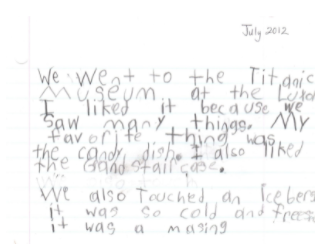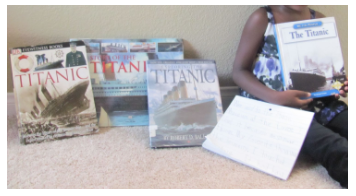Non-Fiction Inquiry: Challenges from A-Z
- Ekuwah [Mends] Moses
![Writer: Ekuwah [Mends] Moses](https://static.wixstatic.com/media/72437d_f94cbe4cce6549c0a7d84a6a15f837fb%7Emv2.jpg/v1/fill/w_32,h_32,al_c,q_80,enc_avif,quality_auto/72437d_f94cbe4cce6549c0a7d84a6a15f837fb%7Emv2.jpg)
- Jan 6, 2022
- 5 min read
“Nonfiction inquiry demands that learners select a real topic that interests them, develop some questions about it, read for information, search for answers through research, report information, and ultimately gain new insight.” - Stephanie Harvey (p.4)
The butterfly net was arriving in two weeks. The larva would be shipped at a later date. I was expected to assemble the kit and teach the 2nd grade students about the life cycle of a butterfly. I was a brand new teacher, and had never had live animals in my classroom. I spent hours reading professional literature (by authors like Harvery, Dorfman, and Cappelli) and co-planning with my colleagues. I knew that I wanted my students to be voracious readers, make connections through integrated academics, and expand their vocabulary. Twenty years later, I can say that the butterfly life cycle unit was transformational for me and my students.
I started the butterfly life cycle inquiry by folding butcher paper into twenty-six large rectangular sections. I wrote a letter, from A-Z, in each section. I mounted this chart (or content word wall) on the bulletin board with the header - “Butterflies.” I checked out nearly every fiction and nonfiction book the school’s library had available about butterflies. I placed the borrowed books on the bulletin board’s ledge and added purchased posters to decorate the perimeter of the interactive display. My students sat on the carpet, and I introduced them to a new multimodal vocabulary challenge.
The challenge was simple. I asked each student to help me look for words that would help us understand butterflies better. I needed their help to fill up our blank content word wall (A-Z chart). I added a few words during whole group lessons, and gave students the opportunity to share what they found during independent reading. We watched short video clips, labeled diagrams, journaled about the caterpillars’ progress, read the library books, and much more. I got energized watching my students’ engagement and eagerness to share new vocabulary words blossom. Abdomen, adult, antennae, caterpillar, chrysalis, compound eye, egg, head, larva, leg, lower wing, molting, proboscis, pupa, spiracles, thorax, upper wing, … the list grew and grew each day. All of my students aced the grade level end-of-unit assessment and went home with a portfolio of classroom experiences.
“The ABC format is a great way to take any topic and offer information about it in an interesting way.” - L. Dorfman and R. Cappelli (p.154)

I continued to suggest the A-Z nonfiction inquiry strategies to classroom teachers and implemented them school-wide during my years as a Literacy Specialist and Instructional Coach. I have also seen variations shared by teachers like Mary and Kerry. Dr. Jacie Maslyk and Chris Woods created a resourceful list of makerspace items from A to Z. Currently, I facilitate family learning workshops and I have incorporated a “Summer A-Z” challenge at the District level.
“The ABC format is easily converted into a real-word writing opportunity for students of any age.”
- L. Dorfman and R. Cappelli (p.154)

I personally implemented the A-Z summer challenges with my own children. One of my favorite memories was following their curiosity about the Titanic. We visited the museum, checked out books from the library, watched documentaries, and my children wrote in their journals. Now, it is so fun to look back at the photos and their writing.
“ ...the best nonfiction writing emerges from topics the writer knows, cares, and wonders about and wants to pursue.” - Stephanie Harvey (p.4)
I am repeatedly asked about my name. I typically receive responses of curiosity and amazement. Americans are usually shocked to learn that Ekuwah is essentially a mobile billboard for Ghana and the Fante tribe. I chose to write My Name is an Address in the ABC format in order to paint a comprehensive picture of what’s in a name. The topic - my name - represents ancestry, history, language, family, migration, geography, culture, and more.
The A-Z organizational format gave me a finite and concise goal in my efforts to convey the complexity. Years of reading, family interviews, and travel experiences prepared me to write this book. Picture books are typically 32 pages in length, and the A-Z format set a reasonable limit for the amount of information I shared and illustrated.
My author’s focus group gave me wonderful feedback. Christina Hardeman is now a Learning Strategist, but she was a first grade teacher and mentor to me during my early years of teaching. She knew me when I first implemented the butterfly unit and was one of the first people to read my debut children’s book. I loved the feedback she shared with me.
“Ekuwah, I truly enjoyed reading this book about the history of your name, your family and how children's names are chosen. The teaching of vocabulary using pictures on different pages was incredible. I found myself anticipating what new words I was going to be introduced to next. The artwork, artifacts, and the memorable photos gave me insight into your family and culture. Adding your website where we as readers can find out what our Ghanaian name is, was a great way to end the book. I can't wait to see the finished copy and share it with students and colleagues.” - Christina Hardeman, Learning Strategist
I sincerely hope educators and families will use My Name is an Address as a mentor text for nonfiction inquiry. Use my example to imitate and innovate with real topics of personal interest! Encourage and provide opportunities for children and families to explore topics of personal interest. I provide editable story map templates on my website to save the time of educators, caregivers, and librarians! I truly can’t wait to see what resonates with readers and leads to authentic writing. Please share your work by tagging me on social media or by visiting my website.

Sources:
Dorfman, L. R., & Cappelli, R. (2009). Nonfiction mentor texts: teaching informational writing through children’s literature, K-8. Stenhouse Publishers.
Harvey, S. (1998). Nonfiction matters: reading, writing, and research in grades 3-8. Stenhouse Publishers.
About the Author
Ekuwah [Mends] Moses
Email: ekuwahm@gmail.com
Website: Ekuwah.com
Instagram: @ekuwah_m
Facebook: @EkuwahMAuthor
Ekuwah [Mends] Moses is a Project Facilitator for Clark County School District (CCSD) Family and Community Engagement Services (FACES). She previously worked as a Performance Zone Instructional Coach, K-5 Literacy Specialist, Learning Strategist, and elementary classroom teacher. My Name is an Address is her debut children’s book.
My Name is an Address A GPS system navigates you to where you are going, but your name could lead to what you are looking for. What's in a name? Ekuwah Mends opens a window into her family, history, culture, language, geography, and more. Ultimately, be inspired to find your own address. #MyNameIsAnAddress




.png)





